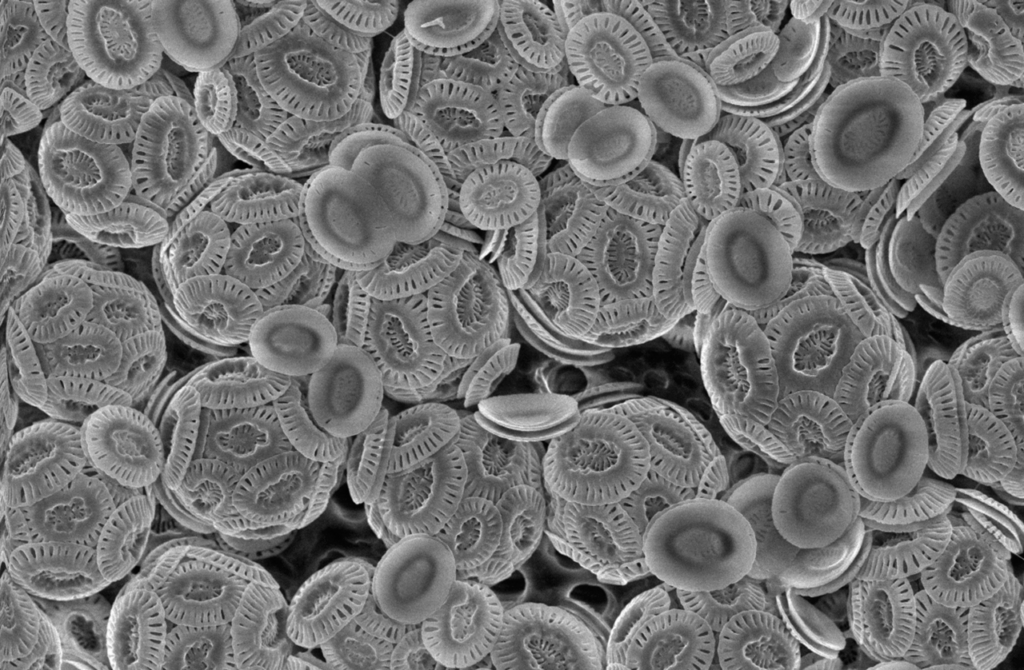When you go to the beach, getting sand in your shoes is a common problem. But besides being a nuisance, the sand and sediment at the beach is a home for many organisms, like clams, crabs, and worms. On the coasts, sand is usually made mainly of eroded rock, but sand and clay is only part of the sediment that covers the ocean floor farther out: most of that is biogenic ooze.
Biogenic ooze is sediment that is at least 30% skeletal material. These consist mainly of two materials: calcium carbonate, or silica. Calcium carbonate comes from the shells of many marine invertebrates, like coral and bivalves, or from microscopic phytoplankton known as coccolithophores (image below). These make up calcareous oozes, which cover around half the ocean floor. Siliceous oozes, on the other hand, are made of silica, which comes from the tests of plankton, mainly diatoms (featured image) and radiolarians. Siliceous oozes only cover around 15% of the ocean; the presence of siliceous ooze can be used as an indicator of high primary productivity, because diatoms, the major source of silica, are phytoplankton and primary producers that are very important to marine food webs. Most of the world’s siliceous oozes are found in locations with good nutrient supply through upwelling, including sub-equatorial regions and around Antarctica.

Featured image credit: Gordon T. Taylor, Stony Brook University—National Oceanic and Atmospheric Administration, via Encyclopedia Britannica.
